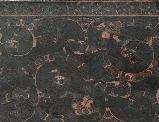Kunming's Jade Snuffbox: A Milestone in 3D Scanning & Modeling

A significant advancement has been made in the archaeological field of Kunming, as experts from the Hunan University of Science and Technology (HUST) have successfully completed a detailed 3D scanning and modeling project on a historical jade snuffbox. This groundbreaking effort brings us closer to understanding the intricate details of this ancient artifact.
The jade snuffbox, an important symbol of craftsmanship and cultural heritage, was discovered in a local excavation site in Kunming. It dates back several centuries and represents one of the finest examples of Chinese jade carving and design. The use of advanced 3D scanning technologies has allowed archaeologists to create highly accurate digital models that can be studied without physical handling, reducing the risk of damage.
The project involved collaboration between archaeologists, engineers, and 3D modeling experts. By using high-resolution laser scanners and photogrammetry techniques, the team has created a virtual representation that captures every minute detail of the jade snuffbox. These digital models will serve as invaluable tools for researchers, educators, and enthusiasts alike, enabling deeper insights into the history and artistry of this piece.
“The success of this project demonstrates our commitment to preserving and sharing China’s rich cultural heritage with the world,” said Professor Li Wei, a leading expert in digital archaeology from HUST. “The detailed 3D models will facilitate further studies and public exhibitions, promoting greater awareness and appreciation of our national treasures.”
The project has not only contributed to academic research but also enhances public engagement in archaeology, ensuring that the beauty and history of the jade snuffbox can be experienced by people globally.
 LongStory.Asia The Digital Archaeological Portal
LongStory.Asia The Digital Archaeological Portal